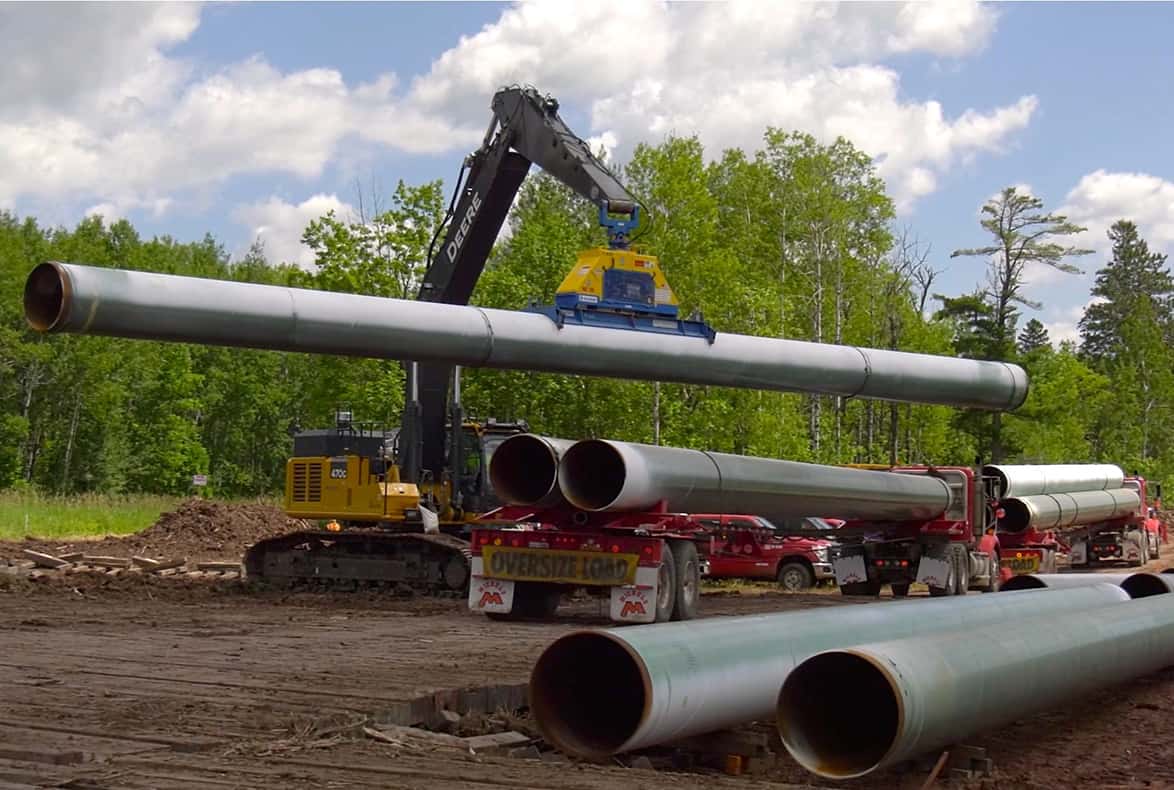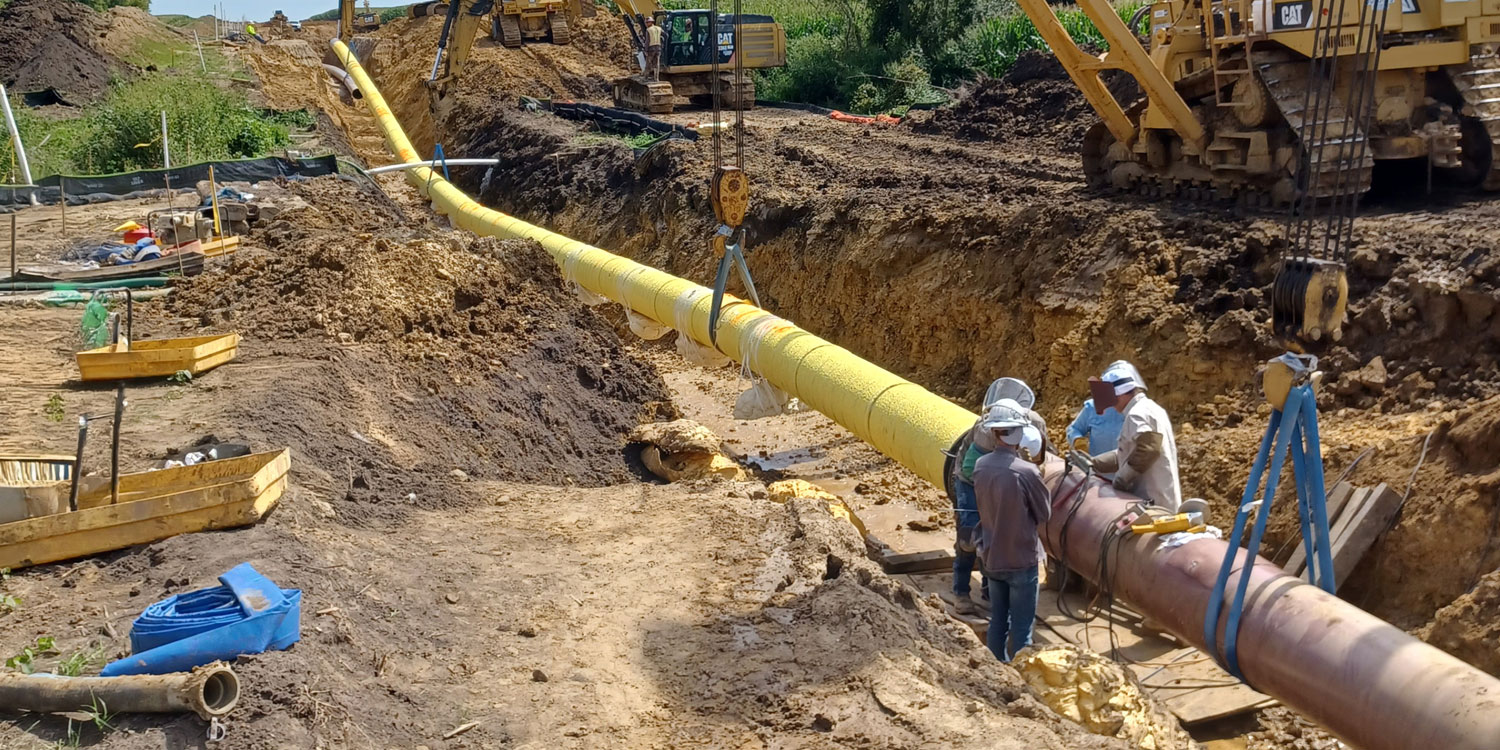Midland oilfield pipeline services: Why sustainability practices are the future
Wiki Article
Recognizing the Trick Attributes of Pipeline Services and Their Effect on Efficiency
Pipeline solutions play an essential role in numerous industries, affecting operational efficiency markedly. Key attributes, such as sophisticated tracking modern technologies and upkeep techniques, are essential for decreasing downtime. Furthermore, regulative conformity warranties safety and environmental management. The interplay between design, framework, and economic elements can complicate these procedures. Comprehending exactly how these aspects impact overall efficiency elevates essential questions regarding finest practices and future advancements in the field.The Role of Technology in Pipeline Surveillance
As improvements in innovation continue to develop, the relevance of reliable pipe tracking has ended up being progressively apparent. Modern pipe systems count on innovative tracking devices that enhance operational effectiveness and safety and security. Technologies such as real-time data analytics, sensors, and drones provide operators with prompt insights into pipeline conditions, enabling them to identify leakages, corrosion, and various other prospective issues prior to they escalate into significant troubles.In addition, the integration of Net of Things (IoT) gadgets has transformed traditional surveillance techniques, enabling constant monitoring and automated coverage. This proactive approach not only lessens threats but also maximizes maintenance timetables and source appropriation. Additionally, advanced software systems help with data visualization and interpretation, empowering decision-makers to react quickly to abnormalities. Collectively, these technical developments not only boost pipeline stability but additionally foster environmental stewardship by mitigating the possible influence of leakages and spills.
Upkeep Techniques for Improved Efficiency
Reliable maintenance strategies are important for maximizing pipeline effectiveness. Applying predictive upkeep techniques, sticking to routine assessment protocols, and creating robust emergency situation action plans can considerably enhance operational dependability. These techniques not only reduce downtime yet also add to the overall safety and honesty of pipeline systems.Predictive Upkeep Techniques
Anticipating maintenance techniques are progressively recognized for their ability to enhance operational efficiency in pipeline solutions. By leveraging information analytics and keeping track of modern technologies, these strategies allow operators to prepare for tools failures prior to they take place. This aggressive technique lessens unplanned downtime, minimizes upkeep costs, and extends the life expectancy of essential possessions. Sensing units and IoT gadgets play a pivotal function in collecting real-time data, permitting the evaluation of devices wellness and performance fads. Machine knowing formulas assess this data to recognize patterns and forecast potential issues. Subsequently, pipeline operators can set up maintenance activities throughout non-peak times, enhancing source appropriation and guaranteeing continual operation. Ultimately, the adoption of anticipating upkeep cultivates a more reputable and effective pipe infrastructure.
Regular Assessment Protocols
Regular inspection methods function as a foundation of upkeep techniques focused on improving performance in pipeline operations - Midland oilfield pipeline services. These procedures include methodical assessments of pipeline stability, focusing on identifying potential problems prior to they rise. Regular inspections commonly include visual assessments, leak detection innovations, and stress tracking to guarantee peak performance. By adhering to well-known routines, operators can determine corrosion, product wear, or obstruction, thereby minimizing downtime and fixing prices. In addition, information gathered during inspections can notify anticipating maintenance initiatives, permitting a proactive strategy to pipe management. Inevitably, regular examinations not just extend the life expectancy of pipeline facilities yet also contribute to more secure and extra trusted transport of resources, strengthening total operational performanceEmergency Situation Reaction Planning
Emergency situation response planning is vital for maintaining efficiency in pipeline operations, making certain that drivers are prepared to deal with unanticipated occurrences swiftly and successfully. A well-structured emergency situation response strategy consists of clear protocols, marked functions, and interaction techniques to minimize dangers linked with pipe failings. Routine drills and training improve group preparedness and acquaint workers with emergency treatments. In addition, having readily available sources, such as spill containment devices and emergency contact listings, can significantly minimize response times. By integrating real-time surveillance innovations, operators can rapidly recognize and react to issues, reducing ecological influence and operational downtime. Ultimately, an extensive emergency feedback plan not only safeguards assets and personnel yet additionally reinforces the general effectiveness of pipeline solutions.Regulatory Conformity and Safety Criteria
Regulative compliance and security standards play a vital function in the pipe solutions industry. Pipeline services Midland Texas. Sticking to market guidelines guarantees that business apply efficient security procedures and risk monitoring techniques. This commitment not just shields workers and the atmosphere but likewise improves overall operational effectivenessConformity With Industry Regulations
Conformity with market laws is vital for guaranteeing the security and effectiveness of pipeline procedures. Regulative frameworks, such as those established by the Environmental Security Firm (EPA) and the Pipeline and Hazardous Products Security Management (PHMSA), established stringent criteria that drivers should stick to. These laws cover various aspects, including pipe style, construction, upkeep, and monitoring, guaranteeing that systems operate safely and efficiently. Non-compliance can cause serious fines, functional delays, and environmental dangers. By sticking to these regulations, pipeline companies not just protect public safety and the atmosphere yet also improve their operational effectiveness. Inevitably, governing conformity promotes trust among stakeholders, guaranteeing that pipe solutions can run effortlessly in an affordable landscape while fulfilling lawful responsibilities.
Safety Procedure Application
Effective safety protocol application is an important component of pipeline procedures, carefully connected to governing compliance and security criteria. Adhering to these methods not just ensures the defense of workers yet also safeguards the atmosphere and facilities. A durable safety framework includes regular training, extensive evaluations, and using proper safety equipment. Organizations should stay cautious in updating their procedures to reflect changes in policies and technical improvements. Conformity with well established safety and security standards lessens the danger of mishaps and enhances functional performance. Furthermore, a culture of safety fosters employee engagement and liability, adding to overall business success. Ultimately, effective safety and security procedure implementation is vital in preserving the honesty of pipeline services and achieving long-lasting sustainability in procedures.Danger Administration Strategies
Executing robust threat administration strategies is vital for ensuring that pipe operations stick to regulative requirements and safety and security criteria. Organizations must recognize potential threats and assess risks connected with pipeline activities. This includes conducting comprehensive examinations, utilizing advanced monitoring modern technologies, and maintaining conformity with industry guidelines. Regular training for workers on safety and security procedures improves situational recognition and prepares groups to react successfully to emergencies. Additionally, establishing backup plans and carrying out drills can significantly mitigate dangers. Teaming up with regulative bodies guarantees positioning with advancing safety Creek Pipe Midland TX and security requirements. By focusing on danger management, pipeline solutions can enhance operational effectiveness while securing both the environment and public safety. Ultimately, an aggressive approach to take the chance of monitoring fosters a culture of safety within the industry.Pipeline Design and Facilities Considerations
How can the design and infrastructure of pipelines influence general operational effectiveness? The configuration of pipes plays a vital function in determining their performance. Efficient style decreases rubbing losses, hence decreasing energy consumption throughout liquid transportation. Aspects such as size, product selection, and design straight effect flow rates and maintenance requirements.Additionally, strategic placement of shutoffs and checking systems improves functional control and security. Creek Pipe local contractor. Infrastructure considerations, consisting of access for repair and maintenance, considerably affect downtime and overall efficiency
Incorporating advanced technology for real-time surveillance assists in punctual discovery of leaks or inadequacies, making sure swift reactions to issues. The overall structural stability, affected by material durability and ecological factors, additionally forms long-term operational success. Thoughtful design and durable framework are crucial for making the most of pipeline efficiency, ultimately contributing to the reliability and earnings of pipe solutions.
Ecological Impact and Sustainability Practices
While the need for pipe services remains to expand, recognizing the ecological effect and adopting sustainability techniques has actually ended up being increasingly necessary. The construction and operation of pipelines can significantly influence ecological communities, wildlife environments, and water sources. To reduce these influences, business are implementing sophisticated technologies and techniques intended at minimizing discharges, stopping spills, and minimizing land disturbance.
Sustainability efforts frequently include using eco friendly products, improving power performance, and utilizing renewable resource sources to power procedures. Furthermore, companies are significantly performing comprehensive ecological analyses prior to project initiation, ensuring compliance with regulations and stakeholder engagement.

Cost Monitoring and Financial Aspects in Pipeline Services
As the pipeline market grows, efficient cost administration and understanding economic elements end up being vital for keeping competitiveness. Firms encounter various financial pressures, including fluctuating material prices, labor costs, and governing conformity charges. To navigate these obstacles, pipe solution providers need to take on calculated economic planning and budgeting methods.Spending in innovation can boost functional efficiency, eventually decreasing costs over time. In addition, effective task management guarantees that resources are designated effectively, lessening delays and unforeseen expenses.

Market problems, such as demand for energy and geopolitical variables, additionally affect financial feasibility. Business should stay nimble, changing their strategies in response to these outside elements.
Regularly Asked Concerns
What Are the Different Kinds Of Pipeline Provider Available?
Numerous sorts of pipe solutions consist of transportation, storage, maintenance, inspection, and repair. Each solution plays a vital duty in making certain the smooth activity of products, enhancing security, and minimizing operational disturbances throughout different fields.Exactly How Typically Should Pipeline Inspections Be Performed?
Pipeline inspections ought to be performed routinely, usually every one to three years, depending upon the type and condition of the pipeline. Extra frequent assessments might be required for older or high-risk pipes to ensure safety and security and integrity.
What Are the Main Causes of Pipeline Failings?
The primary sources of pipe failures consist of deterioration, damaged building and construction, product flaws, outside damage, leakages, and operational errors. Each aspect contributes substantially to possible dangers, highlighting the importance of routine maintenance and tracking for safety.Exactly How Can Business Boost Pipeline Service Reliability?
Business can improve pipe solution integrity by executing routine maintenance routines, using innovative monitoring modern technologies, conducting comprehensive evaluations, buying worker training, and taking on positive risk monitoring techniques to expect and reduce potential failings.What Duty Do Operators Play in Pipeline Providers?
Operators play a necessary duty in pipe services by ensuring risk-free transport, preserving equipment, keeping an eye on system honesty, coordinating maintenance, and replying to emergencies. Their knowledge straight influences functional efficiency and lessens disruptions in service distribution.Report this wiki page